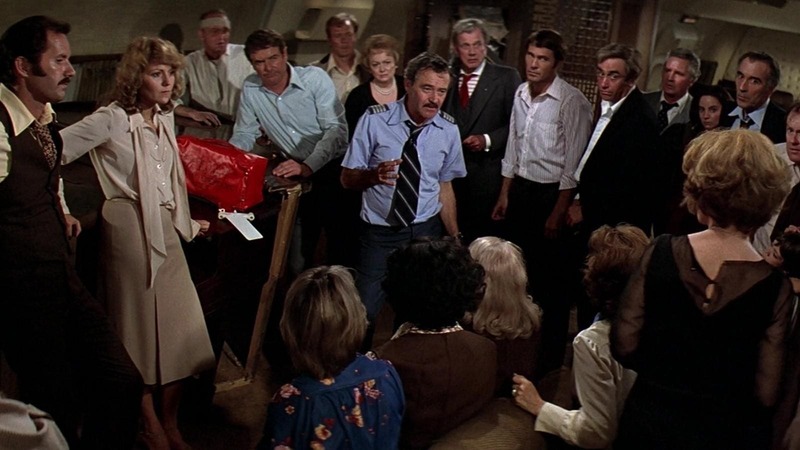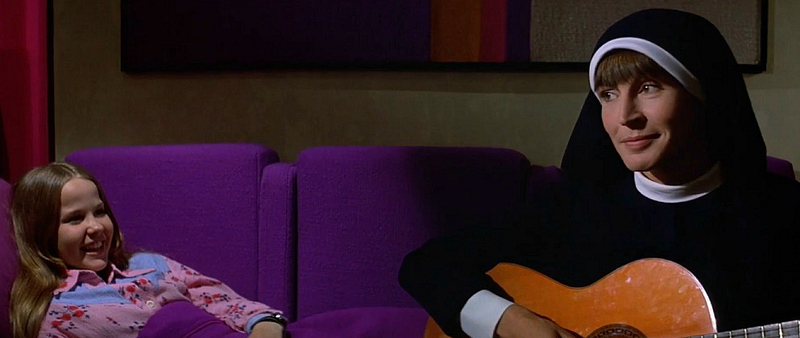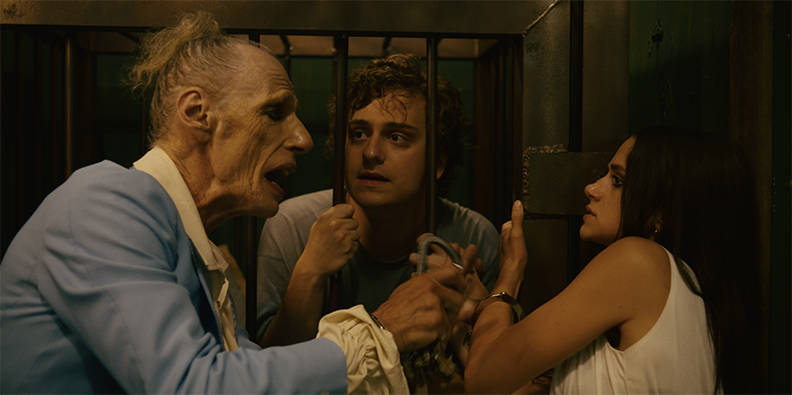
Panic, Pressure, and a Hundred Feet of Ocean
MOVIE REVIEW
Airport '77 (4KUHD)
–
Genre: Drama, Adventure, Action, Thriller
Year Released: 1977
Runtime: 1h 54m
Director(s): Jerry Jameson
Writer(s): Arthur Hailey, Michael Scheff, David Spector
Cast: Jack Lemmon, Lee Grant, George Kennedy, James Stewart, Christopher Lee, Joseph Cotten, Olivia de Havilland, Brenda Vaccaro, Darren McGavin, Robert Foxworth, Robert Hooks
Where to Watch: available September 30, 2025, pre-order your copy here: www.kinolorber.com or www.amazon.com
RAVING REVIEW: There’s a particular thrill to watching a luxury jet double as a pressure cooker. AIRPORT ’77 leans into that energy from the start, packing a privately owned 747 with VIPs, priceless art, and just enough arrogance to make the fall hurt. The setup is clear and, for this series, unusually elegant: an exhibition-minded tycoon sends a flying salon of guests toward Palm Beach, where appearances matter almost as much as timely arrivals. The gamble—both the tycoon’s and the film’s—is that wealth, prestige, and polish will hold together when the cabin fills with seawater. They don’t, and that’s where the film does its best work.
Jerry Jameson approaches the disaster template with a craftsman’s sense of escalation. The first act checks the expected boxes—airborne heist, a co-pilot with divided loyalties, a plan that treats the sky like a shortcut rather than a hostile environment. Once the hijacking goes awry and the plane crashes, the movie shifts gears into a survival drama that feels more visceral than its predecessor. You can feel the pressure differential in the doors and hear the silence between the metallic groans. That physicality anchors even the cornier turns; it’s not realism so much as credible staging, and it keeps the story from floating off with its own contrivances.
The franchise’s calling card has always been the cast, and on that front, this one is stacked. Jack Lemmon brings an unshowy steadiness to Captain Don Gallagher—a leader whose confidence never shades into swagger. It’s smart casting: Lemmon’s everyday decency invites you to root for procedures, not heroics, and the movie is sharper when it celebrates teamwork rather than lone-wolf antics. James Stewart, playing the philanthropic owner, embodies the film’s old-school nobility without tipping into sentimentality, and Christopher Lee, refreshingly, isn’t the designated heavy; he’s humane and decisive, which adds a small, welcome swerve to expectations. Olivia de Havilland and Joseph Cotten supply an air of grace that the script doesn’t always earn. At the same time, Brenda Vaccaro locates a pulse in the chaos—her scenes with Lemmon stitch together the human stakes that could’ve easily dissipated in all the spectacle. On the other end, Lee Grant’s presence is a conscious shot of acidity; the performance is big by design, a reminder that personality doesn’t evaporate just because the cabin pressure drops.
The film’s signature images—the fuselage at rest on the ocean floor, the eerie hush of a sunken cabin speckled with drifting debris, and the slow-motion logistics of an impossible rescue—are where it justifies itself. You can trace the engineering of the set pieces: the way a stuck hatch becomes a clock, a dwindling tank becomes a negotiation, and every attempt to open the plane to the outside world risks turning it into a tomb. Those sequences aren’t merely box-checking; they’re built with an understanding of tension as problem-solving. Even when the solution strains plausibility, the movie respects the effort that went into getting there.
What it can’t quite solve is the franchise’s perennial weakness: characters who function as archetypes rather than people. AIRPORT ’77 does better than its immediate predecessor at exploring relationships—estranged ties, brittle marriages, parents and kids forced to push their bravery—but too often the script asks the cast to carry the weight of backstory that never made it to the page. The result is a curious split: the story’s macro-stakes feel sturdy, while the micro-beats land inconsistently. You invest in the group’s survival more than anyone’s arc, which keeps the movie moving but blunts its emotional impact.
There’s also the heist thread, a hook that promises an intrigue for the first act and then dissipates once the water creeps in. The thieves become a narrative fuse rather than a persistent antagonist, which is fine for momentum but leaves the film lighter than it might have been. A version that truly wrestles with greed—art as currency versus art as legacy—could have matched the visual grandeur with sharper ideas. Instead, the film takes a more pragmatic path: identify the threat, isolate the variables, execute the rescue. It’s competent and occasionally gripping, but not especially reflective.
As part of the franchise arc, AIRPORT ’77 may be the sleekest entry after the original: less shrill than the previous installment, more disciplined than the one to come. It’s not immune to the genre’s indulgences—big personalities, glossy surfaces, and a belief that a disaster can also be an occasion—but it uses those indulgences to stage a credible survival scenario. When the film tilts toward camp, the production design and practical staging pull it back.
The film’s strengths are exactly what benefit from a careful restoration: the controlled lighting inside the submerged sets, the texture of water-logged upholstery, the small visual cues that help you track where people are in the cabin, and why that matters when minutes count. It’s the kind of upgrade that doesn’t change the movie’s essence—this is still a polished, studio-system disaster piece—but it does highlight how much of its tension lives in the look and feel of materials under stress.
In the end, AIRPORT ’77 succeeds as a pressure-chamber thriller dressed up in evening wear. The story won’t surprise you, and the people aren’t likely to haunt you, but the film’s clean execution and textured set pieces deliver exactly the sort of old-fashioned suspense that made this franchise a box-office regular. It’s an attractive, seaworthy entry—mounted, paced, and, at its best, gripping in a way that makes you hold your breath along with the passengers. When the cabin finally opens and the sunlight floods in, it lands as earned relief rather than empty spectacle, and that counts for a lot in a genre that too often confuses noise for impact.
Please visit https://linktr.ee/overlyhonestr for more reviews.
You can follow me on Letterboxd, Instagram, Twitter, and YouTube. My social media accounts can also be found on most platforms by searching for 'Overly Honest Reviews'.
I’m always happy to hear from my readers; please don't hesitate to say hello or send me any questions about movies.
[photo courtesy of KINO LORBER]
DISCLAIMER:
At Overly Honest Movie Reviews, we value honesty and transparency. Occasionally, we receive complimentary items for review, including DVDs, Blu-rays, CDs, Vinyl Records, Books, and more. We assure you that these arrangements do not influence our reviews, as we are committed to providing unbiased and sincere evaluations. We aim to help you make informed entertainment choices regardless of our relationship with distributors or producers.
Amazon Affiliate Links:
Additionally, this site contains Amazon affiliate links. If you purchase through these links, we may receive a commission. This affiliate arrangement does not affect our commitment to honest reviews and helps support our site. We appreciate your trust and support in navigating these links.



Average Rating